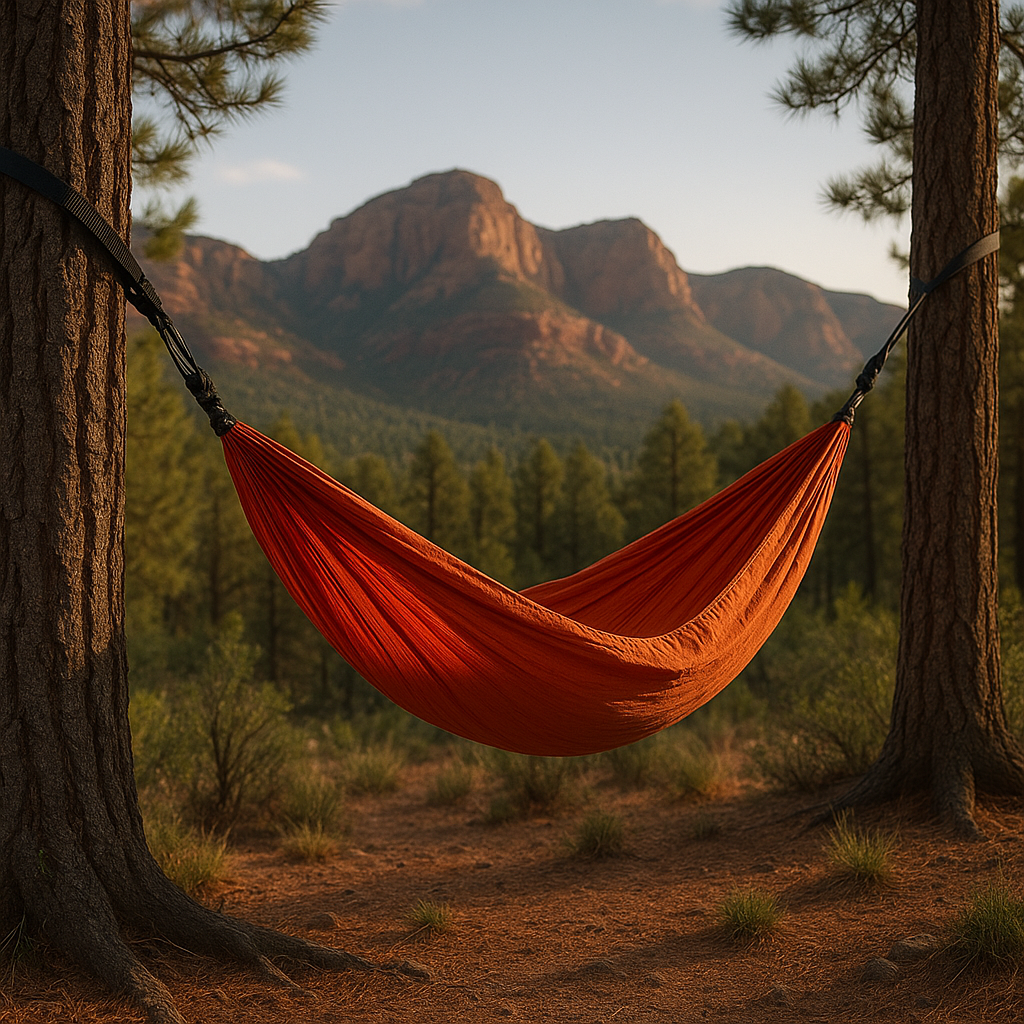Pitching… um errrr Hanging your Hammock
For some reason after years of tenting my brain wants to call it pitching when you are setting up your sleeping quarters… It’s been 2 years since I began to hammock camp when possible and I’ve had the joys of experiencing it a variety of locals from the Red Rock beauty of Sedona AZ, to the Jasper AB in the Majestic Rocky Mountains.
Hammock camping is an increasingly popular way to enjoy the great outdoors, and one of the key aspects of a successful hammock camping experience is setting up your hammock properly. In this post, we’ll explore some of the best tips and advice for setting up a hammock, based on my personal experience and the experiences of experienced hammock campers.
Before you begin setting up your hammock, it’s important to choose the right location. Look for sturdy trees or other secure anchor points that are the right distance apart for your hammock. Make sure there are no hazards such as sharp rocks or tree roots that could damage your gear or cause injury.
Thick live trees should be used as anchors, dead trees are simply not strong enough and could pose a risk of collapse and injury to you and/or those around you.
Next, it’s time to set up your hammock. Begin by attaching the suspension straps to the anchor points and adjusting the length of the straps to achieve the right amount of tension. It’s important to use high-quality straps that can support your weight and withstand the elements.
I always recommend to use a webbing strap as opposed to a rope, sometimes referred to as tree savers these are typically 1-2″ wide webbing that distributes the weight on the tree bark preventing it from digging in and damaging the tree.
Once the straps are in place, attach your hammock to them using the appropriate hardware. Some hammocks may come with carabiners or other attachments, while others may require knots or special hardware. Be sure to follow the manufacturer’s instructions carefully to ensure a secure and safe setup.
Always setup, test and become familiar with your gear prior to using it in the wilderness – including your straps – hanging a “Water Break” or “Drip Line” on the line under the tarp will prevent water from running down your straps into your hammock
With your hammock attached, it’s time to add any necessary accessories such as a rainfly, bug net, or underquilt for insulation. These accessories can help protect you from the elements and keep you comfortable throughout the night.
Setting up a hammock for camping can be a simple and enjoyable process with the right preparation and equipment. By following expert advice, choosing high-quality gear, and taking the time to properly set up your hammock, you can enjoy a comfortable and secure camping experience that will leave you feeling refreshed and energized.

Sign up with your email and always get notifed of Avada Lifestyles latest news!







